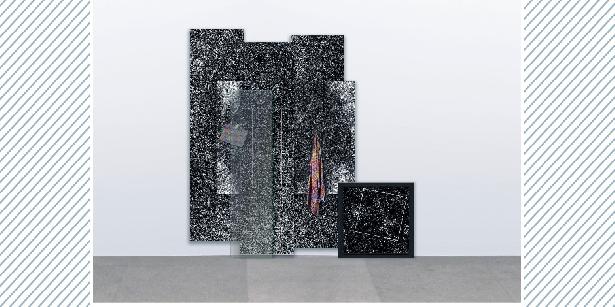____________________________________________________________________
Organization: Center for visual research „Krug“ and Cultural center Čačak
Participants: SERBIA, ALBANIA, BOSNIA AND HERZEGOVINA, BULGARIA, GREECE, ROMUNIA, NORTH MACEDONIA, SLOVENIA, CROATIA, CRNA GORA, TURKEY, AUSTRIA, AUSTRALIA, ESTONIA, ISRAEL, ITALY, JAPAN, CHINA, CANADA, LATVIA, LITHUANIA, HUNGARY, GERMANY, POLAND I RUSSIA.
Sponsors: Municipality of Čačak and Ministry of culture and information of Serbia
Art director: Božidar Plazinić
Contact: bozidarplazinic@gmail.com
A vide and flexible platform intended for revising ang reconstructing the public/collective and private/individual memory of the Yugoslav historical narrative, has been set up and sublimated into the visual effects of the exhibition “The Library – The Balkans open book”. Established to revise and revive the dialogue between the former Yugoslav states, theis exhibition deals with the critical providence of the Yugoslav social-political sapace as well as with the consequences its disintegration has borne. The public space of art used for articulation of the particular political attitudes and experiences has enabled the critical discourse, within which the questions of identity, narrwness, homesickness and awareness of the new reality after the SFRY has fallen to pieces, have been openly reconsidered and problematised by menas of exhibiting practice.
The framework of the exhibition “The Library – The Balkans open book” focuses on a dialogue which is thus given precedence over an artistic expression. Dialogue scope also involves cultural intitutions, which, though works selection, determined the physiognomy of the Balkan biennale exhibition: the Museum of Cotemporary Art, Belgrade, National Museum, Belgrade, the Museum of Contemporay Art of Vojvodina, Novi Sad, the Independent Artistic Association “Remont”, Belgarde, the Art Gallery of Bosna and Hezegovina, Sarajevo. Special support, both institutionally and selectively as well as efforts made for implementing this project are owd to the Gallery “Collegium artisticum” from Sarajevo. Significant contribution to carrying this project out were also made by: : Dr Loran Heđi, Dr Edvard Lusi Smit, Dr Gunar Kvaran, Dr Aleksandar Basin, Dr Nataša Šegota, Dr Ilaria Marota, Dr Nikola Šujica, Dr Meljina Husedžinović and Prof Kosta Bogdanović.
Insisting on the dialogue within the context of this exhibition may be preceived and interpreted on two levels. The firs level on which ate art event organizer tends to affirm a cultural dialogue to brige the gap taking place after Yugoslav space had been didintegrated; it is on this level ehere a cultural/artistic dialogue is identified as the bridge between various poetics and media of expressing artists and therefore various providences of the collective and individual past and present. This level also implies a dialogue made as a strategy of trasparent representation of the memories and experiences in the public space of art, tending to have an activist and critical relatioship towrds the past. If viewed indirectly, the exhibition focuses on the artist`s position as well as on his responsibilities towards particular historical and social-political circumstances, emphasizing the im/possibilities of intervention an the significance of the attitude engaged.
The second level of interpreting the dialogue within the context of the exhibition comnprises an extended dialogue scope, the points it can reach and the results it can achieve integrating the artists from the regional countries which were not an integral part of the Yugoslav social-political space as well as those coming from the countries not belonging to South-eastern Eiropean region. On one hand, uniting the artists, who were not affected by tragic events and consequences due to SFRY disintegration, aims to tackle the approaches to consideration, contemplation and visual summarizing the circumstances, under which the former Yugoslav republics of the 90s of the previous century happened to be.
On the other hand, the international character of current exhibition is also significant because it will be possible to continuosly present the Balkans beyond the shades of the Orient and exotic as well as to emancipate it from the prejudices and cliches which have been molded for many decades.
“The Balkans is Europe, the part of Europe despite the generally accepted view that it has become its province, its periphery…”, at which this exhibition represents one more activity towards mitigating the negative connotations implied ny the word the Balkans. The relevance of the extrovert character of the exhibition “The Library – The Balkans open book”, is reflected in the Balkans contemporary art production practice follow up, network and effective knowledge and experience exchange.
Borders as the thematic framework of this or the previous exhibition “Temple-Book-Flag”, “The Earth-The Book-The Maps”, “Open the Book”, “The River-the Book-the Bridge”, “Whose song am I singing” and “I love the art of others” converge with the sphere of metephorical meanings purporting a universal idea of richness of varieties and their potential coexistence. The polysemantic meaning of these tematic motives considered in correlation with the general name of the exhibition “The Library – The Balkans open book” refer to acultural dialogue as abasis and alink to bridge the gap between the confessional and national differences and geopolitical boundaries set, as well. The exhibition concept of a cultural dialogue along with the programme encouraging mutual understanging and esteem on the one hand and, promoting a mode of reconciling the differences and contradictions occuring in the past, on the other, classifies this biennale as relevant cultural events on the area of ex Yugoslavia.
The structure of the platform made at the Balkan biennale represent a unique field of investigation, erasing of the boudaries, visual varieties of rhetoric and ideas transfer, clearly manifesting what has urged the art event initiarors to pursue and develop a fluid dialogue between the non/Balkan people and to presemt the Balkans as freed of the negative premises, too.
The thematic scope of the next exibition, planned for period from 14th of November until 20th of December 2020 under the name “Boundaries” even more explicitly expresses endevours to affirm such kind of dialogue as a strategy of acting towards reviving broken ties.


